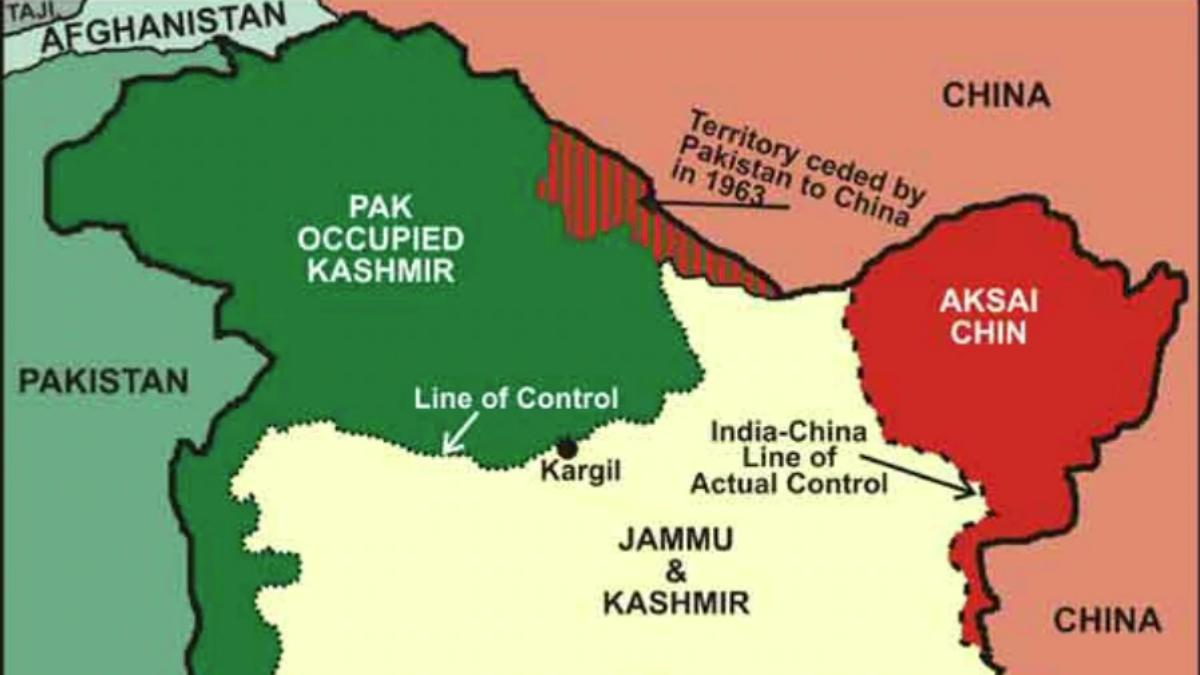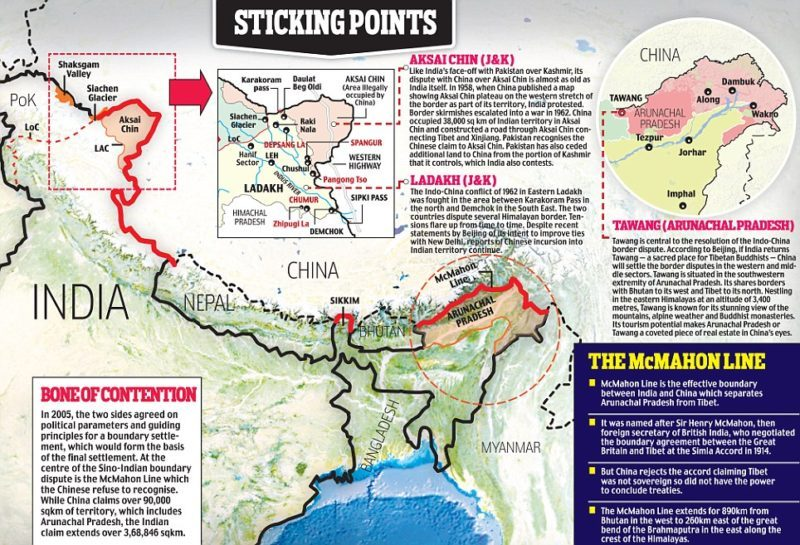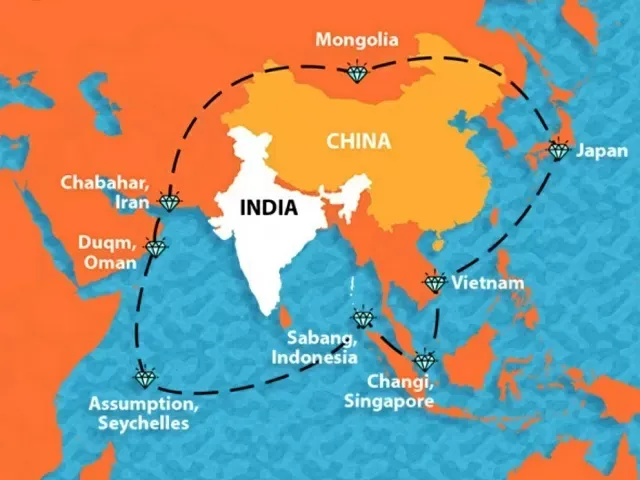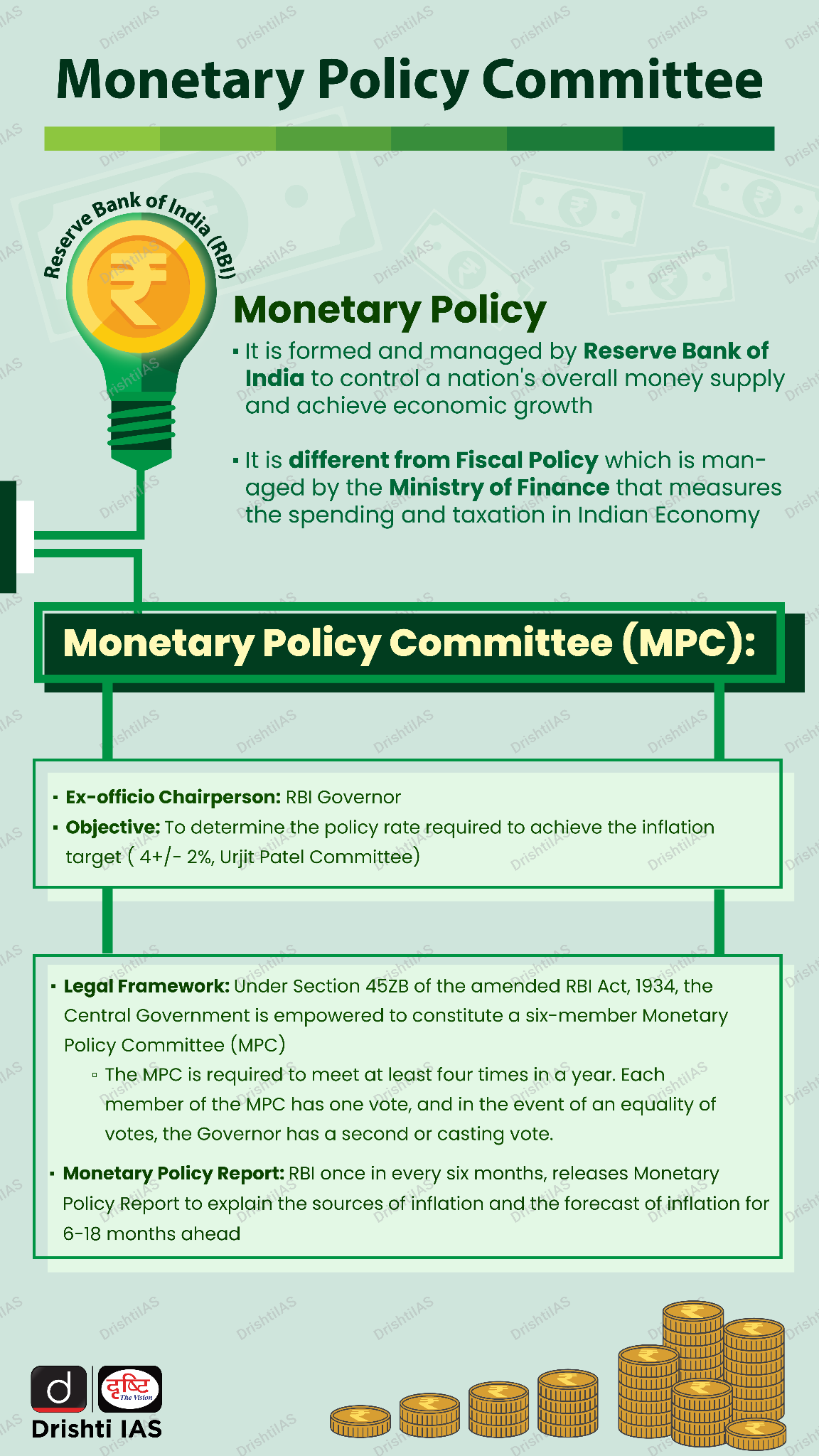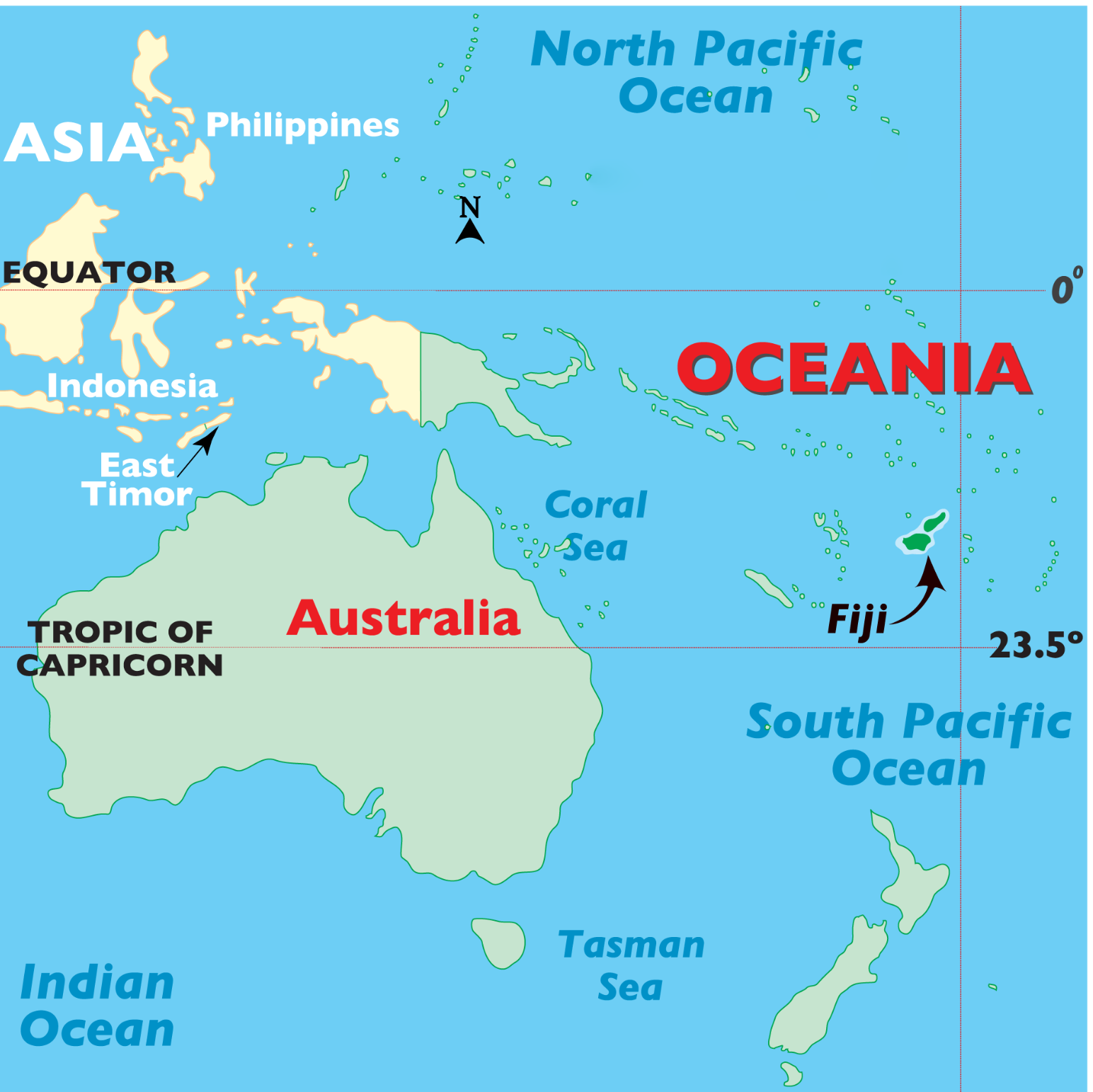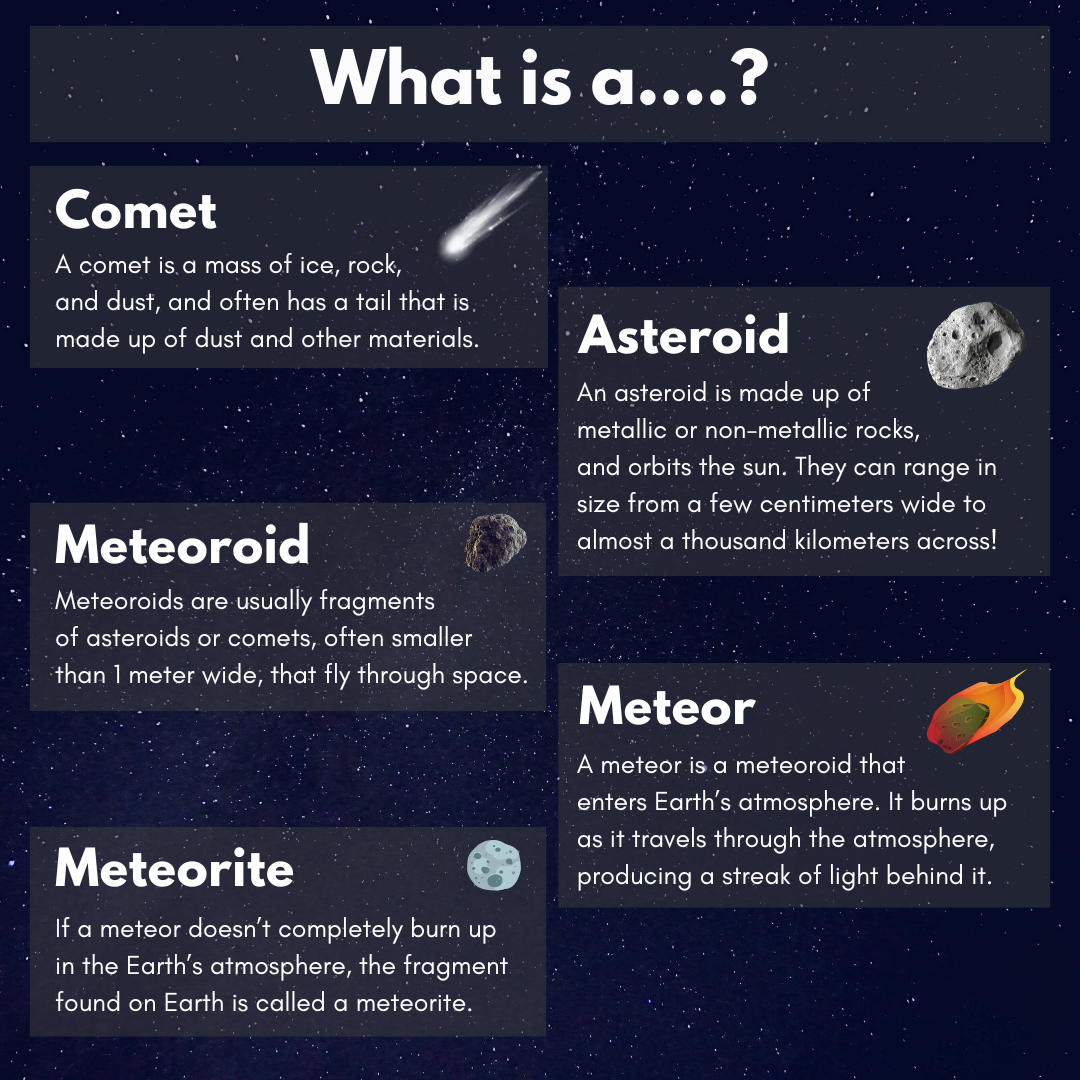Infographics
International Relations
India Rejects China’s Claim Over Arunachal Pradesh
For Prelims: India-China Dispute, Tibet, China-Pakistan Economic Corridor (CPEC), Line of Actual Control (LAC), 1962 Sino-Indian War.
For Mains: India-China Dispute, Shifting International Politics is Affecting India-China Relations, Way Forward.
Why in News?
Recently, China has renamed some places in Arunachal Pradesh, which India rejected stating that assigning “invented” names does not alter the reality that the state “is, has been, and will always be” an integral part of India.
- The Chinese Ministry of Civil Affairs released the fourth list of standardised geographical names in Zangnan, the Chinese name for Arunachal Pradesh, which Beijing claims as part of south Tibet,.
- In April 2023 too, India had reacted sharply when China released the third list of standardised names of 11 places in Arunachal Pradesh.
What is the Border Dispute between India and China?
- Background:
- The India-China border dispute refers to the long-standing and complex territorial disputes along their shared border of 3,488 kilometres.
- The main areas of dispute are Aksai Chin, located in the western sector, and Arunachal Pradesh, in the eastern sector.
- Aksai Chin: China administers Aksai Chin as part of its Xinjiang region, while India considers it part of its UT of Ladakh. The region holds strategic significance due to its proximity to the China-Pakistan Economic Corridor (CPEC) and its potential as a military route.
- Arunachal Pradesh: China claims the entire state of Arunachal Pradesh, referring to it as "South Tibet". India administers this region as a northeastern state and considers it an integral part of its territory.
- No Clear Demarcation: The border between India and China is not clearly demarcated throughout and there is no mutually agreed Line of Actual Control (LAC) along certain stretches. LAC came into existence after the 1962 Indo-China war.
- The India-China border is divided into three sectors.
- Western Sector: Ladakh
- Middle Sector: Himachal Pradesh and Uttarakhand
- Eastern Sector: Arunachal Pradesh and Sikkim
- The India-China border is divided into three sectors.
- Military Standoffs:
- 1962 Sino-Indian War: The border dispute has led to a number of military standoffs and clashes, including the 1962 Sino-Indian War. Both the countries have made efforts to manage the tensions, with various agreements and protocols aimed at maintaining peace along the border.
- Recent Faceoffs: Since 2013, there have been heightened frequency of serious military confrontations between India and China along the Line of Actual Control (LAC).
- The most serious recent episodes of conflict were the 2017 standoff in Doklam region, in Galwan Valley in Ladakh in 2020 and in Tawang in Arunachal Pradesh in 2022.
How is India Responding to China's Aggressive Measures?
- Global Strategic Alliances: India actively engages with like-minded nations to collectively address China's influence in the Indian Ocean Region.
- QUAD: All four member nations find a common ground of being democratic nations and also support the common interest of unhindered maritime trade and security.
- I2U2: It is a new grouping of India, Israel, the USA, and the UAE. Forming alliances with these countries strengthens India's geopolitical standing in the region.
- India-Middle East-Europe Economic Corridor (IMEC): Launched as an alternative trade and connectivity corridor to China's BRI, IMEC aims to strengthen India's presence in the Arabian Sea and the Middle East.
- International North-South Transport Corridor (INSTC): INSTC, formed by India, Iran, and Russia, spans 7,200 km, linking the Indian Ocean, Persian Gulf, and Caspian Sea. With Chabahar Port as a key node, it strategically counters China, providing an alternative to CPEC's Gwadar port.
- India’s Necklace of Diamonds Strategy:
- In response to China's String of Pearls strategy, India adopted the Necklace of Diamonds strategy, emphasising the encirclement of China by enhancing its naval presence, expanding military bases, and strengthening diplomatic ties with regional nations.
- This strategy aims to counter China's military network and influence in the Indo-Pacific and Indian Ocean regions.
- In response to China's String of Pearls strategy, India adopted the Necklace of Diamonds strategy, emphasising the encirclement of China by enhancing its naval presence, expanding military bases, and strengthening diplomatic ties with regional nations.
- Infrastructure Projects Along Borders:
- India has been actively enhancing its border infrastructure to strengthen its position along the India-China border.
- The Border Roads Organisation (BRO) has completed 90 infrastructure projects along the India-China border, worth Rs 2,941 crore.
- As of September 2023, 36 of these projects are in Arunachal Pradesh, 26 in Ladakh, and 11 in Jammu and Kashmir.
- Cooperation With Neighbors:
- India is actively engaging in regional partnerships with neighbouring countries to mitigate Chinese influence.
- Recently, India has supported the development of the Gelephu mindfulness city in Bhutan.
- Furthermore, India has strengthened ties with Nepal through a recent power pact signed during the visit of India’s External Affairs Minister to Kathmandu.
- In 2024, the two countries signed a bilateral agreement for the export of 10,000 MW of power over the next 10 years.
- They also inaugurated three cross-border transmission lines, including the 132 kV Raxaul-Parwanipur, 132 kV Kushaha-Kataiya, and New Nautanwa-Mainahiya lines
- These efforts underscore India's strategy of fostering cooperation with neighbouring nations to bolster regional stability and reduce Chinese influence in the area.
- India is actively engaging in regional partnerships with neighbouring countries to mitigate Chinese influence.
What have been the Previous Efforts to Settle Indo-China Border Disputes?
- Shimla Agreement of 1914:
- To demarcate the boundary between Tibet and North East India, a convention was held at Shimla in 1914, representatives of all three i.e. Tibet, China, and British India.
- After the discussion, the agreement was signed by British India and Tibet but not by the Chinese officials. Presently India recognizes but China rejected both the Shimla agreement and the McMahon line.
- Panchsheel Agreement of 1954:
- The Panchsheel doctrine clearly indicated the willingness to ‘Respect each other’s sovereignty and territorial integrity’.
- China initially accepted the Panchsheel principles, and the agreement served as a basis for bilateral relations between the two countries. However, over time, the Panchsheel Agreement faced challenges, especially during the Sino-Indian War of 19621.
- The Agreement on the Maintenance of Peace and Tranquility:
- It was signed in 1993, which called for a renunciation of the use of force, recognition of the LAC, and the resolution of the border issue through negotiations.
- The agreement laid the groundwork for stability and security in border areas, but tensions persisted.
- China accepted this agreement, but their effectiveness varied over time due to changing geopolitical dynamics and occasional border tensions
- The Agreement on Confidence Building Measures in the Military Field along the LAC:
- It was signed in 1996, which laid down pledges on non-aggression, prior notification of large troop movements, and exchange of maps to resolve disagreements over the LAC.
- Both countries agreed this agreement, aiming to prevent accidental escalations and improve communication between the two countries
- The Border Defence Cooperation Agreement (BDCA):
- It was signed in 2013 following the Depsang Valley incident. It aimed to prevent incidents like the Depsang Valley face-off and enhance mutual understanding.
- Despite the BDCA, tensions along the India-China border have persisted, and incidents continue to occur. However, the agreement remains an important framework for managing border-related issues and maintaining peace in the region.
Way Forward
- India needs to invest in upgrading border infrastructure, including roads, bridges, airstrips, and communication networks, to bolster mobility and response capabilities for Indian forces.
- There is also a need to invest in modernising the armed forces with advanced equipment, technology, and surveillance capabilities to effectively monitor and respond to border incidents.
- It is important for India to fortify alliances with like-minded nations and regional organisations that share concerns regarding China's assertiveness in territorial disputes.
- Engage in intelligence-sharing, joint military exercises, and coordinated responses to regional challenges.
- India shall make more efforts to diversify economic ties to reduce reliance on China and bolster economic resilience.
- Explore trade agreements and partnerships with countries offering alternative markets and investment opportunities.
|
Drishti Mains Question: Q: Examine the recent escalation in the India-China border dispute, focusing on China's renaming of places in Arunachal Pradesh and India's strategic responses. Q: Evaluate the effectiveness of historical and contemporary border dispute settlement mechanisms between India and China. |
UPSC Civil Services Examination, Previous Year Question (PYQ)
Prelims:
Q. Siachen Glacier is situated to the (2020)
(a) East of Aksai Chin
(b) East of Leh
(c) North of Gilgit
(d) North of Nubra Valley
Ans (d)
Mains:
Q. Border management is a complex task due to difficult terrain and hostile relations with some countries. Elucidate the challenges and strategies for effective border management. (2016)
Biodiversity & Environment
India's Soil Erosion Crisis
For Prelims: Soil erosion, Factors of Revised Universal Soil Loss Equation, Brahmaputra Valley, Factors Contributing Soil Erosion.
For Mains: Challenges Related to Soil Health in India, Issues Related to Agriculture.
Why in News?
A recent study has shed light on the concerning state of soil erosion across India, revealing significant challenges and implications for agricultural productivity and environmental sustainability.
- The researchers employed the Revised Universal Soil Loss Equation (RUSLE) for pan-India soil erosion estimation. The equation considers factors like predicted crop loss, rainfall, soil erodibility, and land management practices.
What are the Key Highlights of the Study?
- 30% of India's landmass is experiencing "minor" soil erosion, 3% facing "catastrophic" topsoil loss.
- Brahmaputra Valley in Assam is identified as the country's biggest hotspot for soil erosion.
- Odisha highlighted as another hotspot for "catastrophic" erosion due to anthropogenic interventions.
- Catastrophic erosion is defined as over 100 tonnes of soil lost per hectare annually.
What is the Status of Soil Erosion in India?
- About: Soil erosion refers to the process by which soil is moved or displaced from one location to another.
- It can occur at varying rates depending on factors such as climate, topography, vegetation cover, and human activities.
- Factors Contributing Soil Erosion:
- Natural Causes:
- Wind: Strong winds can pick up loose soil particles and carry them away, especially in dry areas with sparse vegetation.
- Water: Heavy rainfall or fast-flowing water can detach and transport soil particles, particularly on sloped land or where there's little vegetation cover.
- Glaciers and Ice: The movement of glaciers can scrape and transport massive amounts of soil, while freezing and thawing cycles can cause soil particles to break apart and become more susceptible to erosion.
- Human-Induced Factors:
- Deforestation: Clearing forests removes trees and other vegetation that hold soil in place with their root networks.
- This exposes the soil to the full force of wind and rain, making it more prone to erosion.
- Poor Agricultural Practices: Conventional farming methods like excessive tilling can break down soil structure and leave it vulnerable to erosion.
- Practices like leaving fields bare during fallow periods or using inadequate crop rotation also contribute to the problem.
- Overgrazing: When livestock graze an area too heavily, they can damage vegetation cover, leaving the soil exposed and susceptible to erosion.
- Construction Activities: Land clearing and excavation during construction projects disturb the soil and make it more prone to erosion, especially if proper precautions are not taken.
- Deforestation: Clearing forests removes trees and other vegetation that hold soil in place with their root networks.
- Natural Causes:
- Degraded Soil in India: According to the National Bureau of Soil Survey and Land Use Planning, around 30% of the soil in India is degraded.
- Of this, around 29% is lost to the sea, 61% is transferred from one place to another, and 10% is deposited in reservoirs.
What are the Challenges Related to Soil Health in India?
- Low Organic Carbon Content: Indian soils typically have very low organic carbon content, which is crucial for fertility and water retention.
- The soil organic carbon (SOC) content in Indian soils has declined from 1% to 0.3% in the past 70 years.
- Nutrient Deficiencies: A significant portion of Indian soils suffer from deficiencies in major nutrients like nitrogen, phosphorus, and potassium.
- Over-reliance on chemical fertilisers exacerbate this problem.
- Water Management Issues: Both water scarcity and improper irrigation practices harm soil health. Insufficient water can lead to salinisation, while over-irrigation can cause waterlogging, both impacting soil fertility and structure.
- Around 70% of irrigation water in India is wasted due to the poor management of the farmer.
- Socioeconomic Factors: Land fragmentation due to population pressures and economic constraints can make it difficult for farmers to adopt sustainable practices that improve soil health.
- The average landholding size in India is 1-1.21 hectare.
What are the Government’s Initiatives Related to Soil Conservation?
- Soil Health Management under National Mission for Sustainable Agriculture (NMSA):
- Soil Health Card Scheme
- Paramparagat Krishi Vikas Yojana (PKVY): By promoting organic farming, PKVY aims to reduce reliance on chemical fertilisers and pesticides thus allowing natural replenishment of soil nutrients and organic matter, leading to healthier soil.
- Neem Coating of Urea: Neem coating slows down the release of urea, making nitrogen available to plants for a longer period and reducing wastage.
- This translates to less fertiliser needed and potentially improved soil health in the long run.
- Nutrient Based Subsidy (NBS) Scheme: This scheme focuses on subsidising essential nutrients (phosphorus and potassium) for plants, besides nitrogen from urea.
- This encourages balanced fertiliser use, preventing excessive reliance on nitrogen, which can harm soil health over time.
What Measures can be Adopted to Prevent Soil Erosion and Improve Soil Health?
- Biochar and Biofertilizers: Combining biochar application with biofertilizers can be a powerful strategy.
- Biochar holds nutrients and water, while biofertilizers improve nutrient availability and soil health. This can reduce reliance on chemical fertilisers and enhance soil fertility.
- Biochar is a charcoal-like substance produced by pyrolysis (heating in absence of oxygen) of organic materials like crop residues, manure, or weeds.
- Biofertilizers are live microorganisms that can improve soil fertility and plant growth.
- Biochar holds nutrients and water, while biofertilizers improve nutrient availability and soil health. This can reduce reliance on chemical fertilisers and enhance soil fertility.
- Drone Technology for Precision Agriculture: Namo Drone Didi Scheme can be linked with soil conservation.
- Drones equipped with multispectral sensors can map soil health parameters like nutrient levels, organic matter content, and moisture levels across large fields.
- This data can be used for precision application of fertilisers and amendments, minimising waste and maximising effectiveness.
- Drones can also be used for targeted seeding and weed control, further reducing soil disturbance.
- Regenerative Agriculture Practices: Integrating no-till farming and using compost can create a customised approach for different areas.
- Additionally, exploring innovative cover cropping techniques like multi-species cover cropping can provide additional benefits like weed suppression and improved soil structure.
|
Drishti Mains Question: Q. Evaluate the effectiveness of current government policies and initiatives in addressing soil erosion challenges, and propose innovative strategies for sustainable soil management. |
UPSC Civil Services Examination Previous Year Question (PYQ)
Prelims:
Q. Consider the following statements: (2017)
The nation-wide ‘Soil Health Card Scheme’ aims at
- expanding the cultivable area under irrigation.
- enabling the banks to assess the quantum of loans to be granted to farmers on the basis of soil quality.
- checking the overuse of fertilisers in farmlands.
Which of the above statements is/are correct?
(a) 1 and 2 only
(b) 3 only
(c) 2 and 3 only
(d) 1, 2 and 3
Ans: (b)
Mains:
Q. How far is the Integrated Farming System (IFS) helpful in sustaining agricultural production? (2019)


Indian Economy
MPC Keeps Repo Rate Unchanged
For Prelims: Reserve Bank of India, Banking sector & NBFC, Sovereign Green Bond, Monetary Policy Committee, Fiscal policy, Repo Rate, inflation,
For Mains: Significance of interest rate in fiscal policy and monetary policy
Why in News?
Recently, the Monetary Policy Committee (MPC) of the Reserve Bank of India (RBI) voted in its meeting to keep interest rates unchanged. The repo rate stands at 6.5%.
- The committee also decided to remain focused on the withdrawal of accommodation.
Note:
- Accommodative Monetary Policy: An accommodative stance means the central bank is prepared to expand the money supply to boost economic growth.
- The withdrawal of accommodative policy means a reduction of the money supply in the system which will rein in inflation.
What are the Outcomes of the MPC Meeting?
- The RBI has retained the GDP growth forecast at 7% for FY25 as against the 7.6% growth projected by the National Statistical Office (NSO).
- It has projected a growth of 7.1% in the first quarter of FY25, 6.9 per cent in Q2, and 7% each in Q3 and Q4.
- The MPC decided to keep the policy repo rate under the liquidity adjustment facility (LAF) unchanged at 6.50% and the standing deposit facility (SDF) at 6.25%.
- The MPC remains committed to aligning inflation with the 4% target within a band of +/- 2% while supporting the objective of growth.
What are the Reasons for Holding Interest Rates Unchanged?
- Food Inflation
- Higher food inflation keeps headline inflation elevated even though the Indian economy has witnessed broad-based moderation in inflation.
- The uncertainties in food prices continue to pose challenges, due to global uncertainties and the effect of El Nino.
- The arrival of rabi harvests in the market along with expectations of a normal monsoon, next year will also alleviate pressure on food prices.
- However, the food and beverages inflation remains elevated led by price pressures in vegetables, pulses and spices.
- Festival Season:
- The festive season will promote liquidity in the market due to inflated demand and increased consumption during festival days.
- Crude Oil Prices and Input Costs:
- Crude oil prices have eased, but the outlook remains uncertain, due to global uncertainty because of regional conflict and supply chain disruptions.
- Resilient Economic Activity:
- The Indian economy has displayed resilience despite the uncertainties and challenges posed by various factors.
- This has led to the decision to maintain benchmark rates, reflecting confidence in the economy's ability to withstand potential shocks.
- Previous Policy Repo Rate Hikes:
- The Monetary Policy Committee acknowledged that the previous policy repo rate hikes are still in the process of influencing the economy.
- Inflation Risk Management:
- Keeping rates unchanged might be a precautionary measure to closely monitor the situation and be ready to act promptly in case inflationary pressures escalate.
What is Inflation Targeting?
- About:
- Inflation targeting in India is a monetary policy framework that was adopted by the Reserve Bank of India in 2016.
- Under this framework, the RBI targets the inflation rate and uses monetary policy instruments to achieve it.
- Currently, RBI's primary objective is to achieve the 4% inflation target. The RBI has a comfort zone of +/- 2% within which inflation must remain. This means that the RBI aims to keep the inflation rate between 2% to 6%.
- Limitations:
- Structural Constraints: Inflation targeting may not be effective in addressing supply-side shocks or structural constraints that affect the economy, such as inadequate infrastructure, which can lead to higher inflation.
- Exchange Rate Volatility: Inflation targeting can lead to exchange rate volatility, particularly in countries with open economies, as changes in interest rates can affect capital flows and exchange rates.
- Socio-Economic Impacts: Inflation targeting can have social and economic impacts, particularly on vulnerable populations, as changes in interest rates can affect employment, income, and other macroeconomic variables.
- Data Availability: Inflation targeting requires accurate and timely data on inflation and other macroeconomic variables, which may not be available in all countries, including India.
|
Drishti Mains Question: Q. Discuss the reasons for keeping the repo rate unchanged and the role of the Monetary Policy Committee in inflation targeting. |
UPSC Civil Services Examination, Previous Year Questions (PYQs)
Prelims:
Q1. Concerning the Indian economy, consider the following: (2015
- Bank rate
- Open market operations
- Public debt
- Public revenue
Which of the above is/are component/ components of Monetary Policy?
(a) 1, 2 and 3
(b) 2, 3 and 4
(c) 1 and 2
(d) 1, 3 and 4
Ans: c
Q2. If the RBI decides to adopt an expansionist monetary policy, which of the following would it not do? (2020)
- Cut and optimize the Statutory Liquidity Ratio
- Increase the Marginal Standing Facility Rate
- Cut the Bank Rate and Repo Rate
Select the correct answer using the code given below:
(a) 1 and 2 only
(b) 2 only
(c) 1 and 3 only
(d) 1, 2 and 3
Ans: (b)
Mains:
Q.1 Do you agree that the Indian economy has recently experienced V-shaped recovery? Give reasons in support of your answer. (2021)


Important Facts For Prelims
Reform by RBI for Financial Inclusion and Digital Innovation
Why in News?
Recently, the Reserve Bank of India (RBI) governor, in a press conference on monetary policy decisions, announced several changes aimed at promoting greater economic inclusivity and enhancing the utilisation of information technology for economic activities.
What are Recent Developments Proposed by RBI?
- Cash Deposit Facility by Unified Payment Interface (UPI):
- Customers will have the option to deposit cash at cash deposit machines (CDMs) in banks and ATMs using the UPI app.
- Presently, cash deposits at CDM typically necessitate the use of a debit card, whether at banks or ATMs.
- UPI is a system that powers multiple bank accounts into a single mobile application (of any participating bank), merging several banking features, seamless fund routing & merchant payments into one hood.
- UPI is currently the biggest among the National Payments Corporation of India (NPCI) operated systems including National Automated Clearing House (NACH), Immediate Payment Service (IMPS), Aadhaar enabled Payment System (AePS), Bharat Bill Payment System (BBPS), RuPay etc.
- Customers will have the option to deposit cash at cash deposit machines (CDMs) in banks and ATMs using the UPI app.
- Allowing Third Party App to access UPI for Prepaid Payment Instruments (PPIs):
- Currently, UPI payments from PPIs require using the web or mobile app provided by the PPI issuer.
- RBI suggested allowing users to use third-party UPI apps to make UPI payments from PPI wallets.
- PPIs are instruments that facilitate the purchase of goods and services, conduct of financial services and enable Remittance facilities, among others, against the money stored in them.
- PPIs can be loaded/reloaded by cash, debit to a bank account, or credit and debit cards.
- Permit FPIs to invest in Sovereign Green Bond:
- To encourage broader participation of non-residents in Sovereign Green Bond, the RBI has decided to authorise eligible foreign investors in the International Financial Services Centre to invest in these bonds.
- Currently, foreign portfolio investors (FPIs) registered with SEBI can invest in Sovereign Green Bond through various investment routes available for FPIs in government securities.
- Sovereign Green bonds are issued by companies, countries and multilateral organisations to exclusively fund projects that have positive environmental or climate benefits and provide investors with fixed-income payments.
- The projects can include renewable energy, clean transportation and green buildings, among others.
- . Mobile App for Retail Direct Scheme:
- The RBI also decided to introduce a mobile app for its Retail Direct scheme, launched in November 2021.
- This scheme allows individual investors to hold gilt accounts with the RBI and invest in government securities.
- A Gilt Account is an account opened and maintained for holding Government securities.
- Review of Liquidity Coverage Ratio (LCR):
- The RBI is likely to review the framework on LCR for better management of liquidity risk by banks.
- The LCR is a ratio that measures the proportion of high-quality liquid assets (HQLA) that financial institutions hold.
- Banks covered under the LCR framework must maintain a stock of HQLA to cover 30 days' net outflow under stressed conditions, with a minimum LCR of 100% since 1st January 2019.
- HQLAs include cash, short-term bonds, and other cash equivalents, as well as excess Statutory Liquidity Ratio (SLR), Marginal Standing Facility (MSF) assets and the Facility to Avail Liquidity for Liquidity Coverage Ratio (FALLCR) (set at 15% of the bank's deposits since 1st April 2020).
UPSC Civil Services Examinations, Previous Year Questions
Prelims:
Q1. Which of the following is the most likely consequence of implementing the ‘Unified Payments Interface (UPI)’? (2017)
(a) Mobile wallets will not be necessary for online payments.
(b) Digital currency will replace the physical currency in about two decades.
(c) FDI inflows will drastically increase.
(d) Direct transfer of subsidies to poor people will become very effective.
Ans: (a)
Q2. Concerning digital payments, consider the following statements: (2018)
- The BHIM app allows the user to transfer money to anyone with a UPI-enabled bank account.
- While a chip-pin debit card has four factors of authentication, the BHIM app has only two factors of authentication.
Which of the statements given above is/are correct?
(a) 1 only
(b) 2 only
(c) Both 1 and 2
(d) Neither 1 nor 2
Ans: (a)
Mains:
Q. Do you agree with the view that steady GDP growth and low inflation have left the Indian economy in good shape? Give reasons in support of your arguments. (2019)
Important Facts For Prelims
Expanding the OCI Card Scheme
Why in News?
Recently, India has been contemplating extending the Overseas Citizenship of India (OCI) Card privileges to overseas Indians in Fiji and other nations after relaxing the rules for Suriname.
- In 2023, India announced an extension of the eligibility criteria for OCI card of the original Indian immigrants in Suriname, from the fourth generation to the sixth generation.
What is Overseas Citizenship of India (OCI) Card?
- About:
- The concept of OCI was introduced in response to demands for dual citizenship by the Indian diaspora, particularly in developed countries.
- The Ministry of Home Affairs defines an OCI as a person who:
- Was a citizen of India on or after 26th January 1950; or
- Was eligible to become a citizen of India on 26th January 1950; or
- Is a child or grandchild of such a person, among other eligibility criteria.
- According to Section 7A of the OCI card rules, an applicant is not eligible for the OCI card if he, his parents, or grandparents have ever been a citizen of Pakistan or Bangladesh.
- The category was introduced by the government in 2005. The Government of India via the Citizenship (Amendment) Act, 2015 merged the Person of Indian Origin (PIO) category with the OCI category in 2015.
- Historical Background:
- The OCI Card scheme was launched during the Pravasi Bharatiya Divas in 2005.
- It was introduced as an acknowledgment of the persistent emotional attachment of the Indian diaspora to their country of origin.
- Limitations and Restrictions:
- They do not have the right to vote.
- They cannot hold constitutional offices or government jobs.
- They cannot purchase agriculture or farmland.
- OCI Card and Civil Rights:
- The OCI Card does not confer political rights.
- Holders cannot participate in elections or hold public office, reflecting the government’s stance on maintaining clear boundaries between citizenship and overseas citizenship.
- Benefits of the OCI Card:
- Multiple entry, multi-purpose lifelong visa to visit India.
- Exemption from registering with the Foreigners Regional Registration Office (FRRO) regardless of the duration of their stay.
- Parity with Non-Resident Indians (NRIs) in financial, economic, and educational fields.
- Current Scenario:
- The OCI card scheme has been a key element of the Indian government’s effort to deepen its relationship with its diaspora.
- As of March 2020, the Home Ministry had issued over 3.5 million OCI cards. According to the Ministry of External Affairs (MEA), this number had exceeded 4 million by early 2022.
- The vast majority were issued to foreign nationals in the United States, United Kingdom, Australia, and Canada.
- The focus on expanding the OCI card scheme highlights India's efforts to engage with and support its overseas Indian communities around the world.
Person of Indian Origin (PIO)
- PIO refers to a foreign citizen (except a national of Pakistan, Afghanistan Bangladesh, China, Iran, Bhutan, Sri Lanka and Nepal) who:
- at any time held an Indian passport or
- who or either of their parents/ grandparents/ great grandparents were born and permanently resident in India as defined in Government of India Act, 1935 and other territories that became part of India thereafter or
- is a spouse of a citizen of India or a PIO.
UPSC Civil Services Examination, Previous Year Question (PYQ)
Prelims
Q. With reference to India, consider the following statements: (2021)
- There is only one citizenship and one domicile.
- A citizen by birth only can become the Head of State.
- A foreigner once granted citizenship cannot be deprived of it under any circumstances.
Which of the statements given above is/are correct?
(a) 1 only
(b) 2 only
(c) 1 and 3
(d) 2 and 3
Ans: (a)
Important Facts For Prelims
Cicadas
Why in News?
In a rare occurrence, a trillion cicadas from two different broods are expected to begin appearing in the Midwest and Southeast regions of the US at the end of April, 2024.
What are Cicadas?
- About:
- Cicadas are insects that belong to the order Hemiptera and the superfamily Cicadoidea.
- Hemipteran insects, also called true bugs, have mouthparts used for piercing and sucking and have two pairs of wings.
- They spend most of their lives underground and emerge from the soil mainly to mate. Once out of the ground, their life span is fairly short, somewhere between two to four weeks.
- Cicadas are insects that belong to the order Hemiptera and the superfamily Cicadoidea.
- Habitat:
- Most cicadas are canopy dwellers and are found in natural forests with large trees; found in every continent except Antarctica.
- The genetic diversity of cicadas in India and Bangladesh ranks the highest globally, followed by China.
- Most cicadas are canopy dwellers and are found in natural forests with large trees; found in every continent except Antarctica.
- Emergence:
- Cicadas have complex life cycles that involve long periods of underground development and short periods of adult emergence.
- There are three species of cicadas that emerge every 17 years and three species that emerge every 13 years.
- Originally, 30 broods of periodical cicadas were categorised based on geography and emergence times, but currently, only about 15 broods remain active due to some becoming extinct.
- Cicadas have complex life cycles that involve long periods of underground development and short periods of adult emergence.
- Features:
- Researchers suspect that the lengthy development period of cicadas, during which they feed on plant sap underground, may be related to their evasion of above-ground predators, before emerging to construct a "cicada hut" and climb onto nearby trees or vegetation.
- The adult cicadas are vulnerable to predators such as turtles and other forest inhabitants because they are clumsy and lack defences, making them virtually easy prey.
What Happens When Cicadas Emerge?
- Mechanism:
- After emerging from the ground in massive numbers, cicadas shed their exoskeletons to transform into their winged form, often leaving the discarded exoskeletons attached to tree trunks and twigs.
- Adult cicadas live for a short span of two to four weeks, during which they eat little, mate, and produce a loud collective chorus of up to 100 decibels to attract females.
- Significance:
- In urban areas, cicada bodies can be utilised as free fertiliser for gardens and natural areas.
- They act as natural tree gardeners and benefit the environment by aerating the soil with the holes they leave behind when emerging, facilitating rainwater absorption to nourish tree roots during hot summer months.
- The slits made by cicadas in trees can cause branches to break, leading to "flagging," a natural pruning process, and when the branches regrow, they tend to produce larger fruits, while the cicadas' decomposing bodies provide nutrients for the trees.
- In urban areas, cicada bodies can be utilised as free fertiliser for gardens and natural areas.


Rapid Fire
ICGS Samudra Paheredar's ASEAN Deployment
The Indian Coast Guard's Pollution Control Vessel (PCV) Samudra Paheredar recently made a significant port call at Muara, Brunei, as part of its ongoing overseas deployment to ASEAN countries.
- This deployment is part of the India ASEAN Initiative for Marine Pollution, announced by the government in 2022.
- This deployment not only strengthens bilateral relationships but also aligns with India's maritime vision of SAGAR, Act East Policy, and Indo-Pacific Vision, emphasizing shared concerns for marine pollution and maritime security.
Read more: India's Maritime Security Paradigm
Rapid Fire
Mother of Dragons Comet
The celestial phenomenon known as the "Mother of Dragons" comet, formally designated as Comet 12P/Pons-Brooks, is currently undergoing a rare sighting in the skies of the Northern Hemisphere.
- It was first discovered in the early 19th century and is known for its distinctive green glow. This hue is due to the presence of diatomic carbon molecules within the comet.
- It stands out for its volcanic activity. Unlike most comets, it erupts, shooting ice and dust from its core. These outbursts make the comet brighter and easier to see from Earth, earning it the nickname "Mother of Dragons."
- It is a Halley-type comet, meaning it has a relatively short orbital period compared to other comets, and it completes a single orbit around the sun in just over seven decades. The last time it passed by Earth was in 1954, and the next time will be during the mid-2090s.
- It falls into the category of Jupiter-family comets, indicating that its trajectory is affected by the gravitational force of Jupiter.
- It’s periodic nature provides insights into the dynamics of comets and the evolution of our solar system.
Read More- Hubble Space Telescope, Comets, National Aeronautics and Space Administration (NASA)


Rapid Fire
Homoeopathy
Recently, the President of India inaugurated a two-day Homoeopathy Symposium, organised by the Central Council for Research in Homoeopathy on the occasion of the World Homoeopathy Day.
- Theme of the Symposium is: ‘Empowering Research, Enhancing Proficiency’ is very relevant.
- Homeopathy is a system of medicine which is based on the concept that the body has an inherent ability to heal itself, and the role of the homoeopathic remedy is to stimulate this self-healing process.
- Practitioners of homoeopathy believe that diluting the substance to extremely small amounts enhances its healing properties while reducing any potential side effects.
- The World Homoeopathy Day is observed every year on 10th April to commemorate the Birth Anniversary of Dr. Hahnemann, the Founder of Homoeopathy.
- Theme 2024: Homeoparivar: One Health, One Family.
Read more: Synchronising AYUSH and Modern Medicine

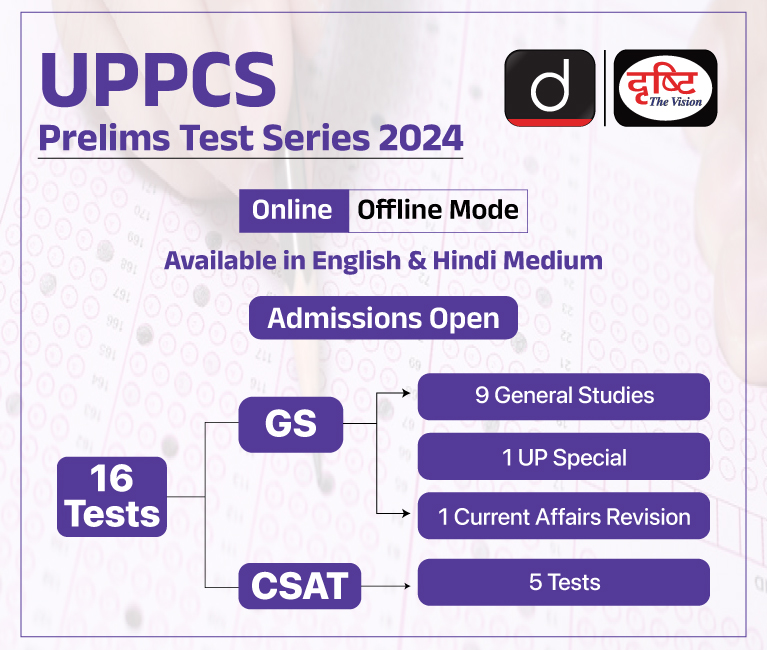
Rapid Fire
KABIL & CSIR-IMMT Sign Critical Minerals MoU
- Khanij Bidesh India Limited (KABIL) and the Council of Scientific and Industrial Research - Institute of Minerals and Materials Technology (CSIR-IMMT) signed a Memorandum of Understanding (MoU) for Technical & Knowledge cooperation in Critical Minerals.
- The agreement facilitates joint research activities and scientific information exchange between KABIL and CSIR-IMMT.
- KABIL is a joint venture company formed in 2019 by National Aluminium Company Ltd. (NALCO), Hindustan Copper Ltd. (HCL), and Mineral Exploration Company Ltd. (MECL).
- The company's goal is to identify, acquire, develop, process, and use strategic minerals from overseas locations to supply India.
- CSIR-IMMT was established in 1964 as Regional Research Laboratory, Bhubaneswar, under the aegis of the CSIR, New Delhi.
- The institute conducts basic research and technology programs to address R&D problems in the mining, mineral, and metals industries.
- Its main thrust is to empower Indian industries with advanced process know-how and consultancy services for sustainable development.
Read more: Critical Minerals' Conundrum




